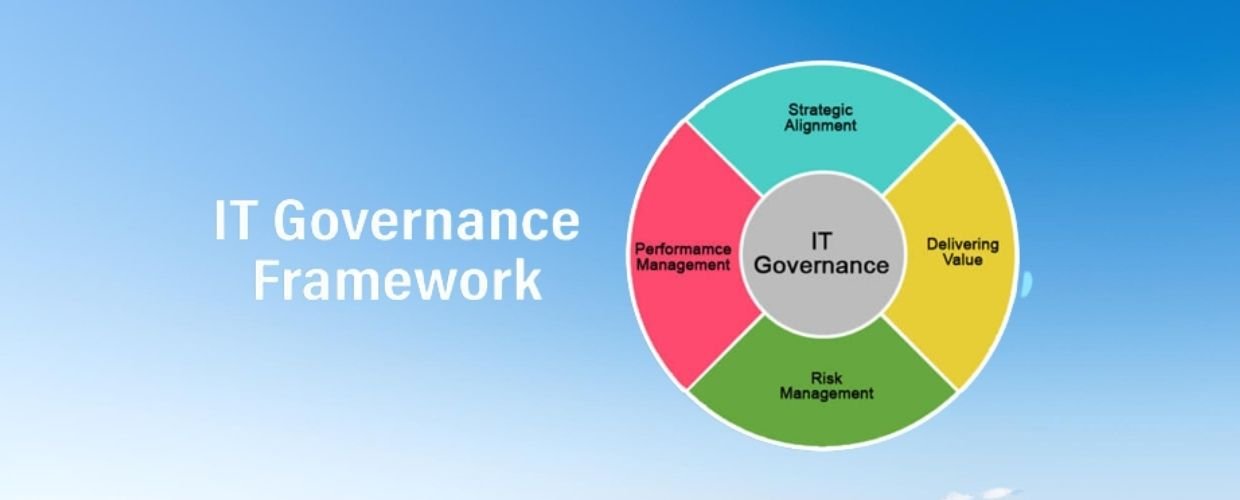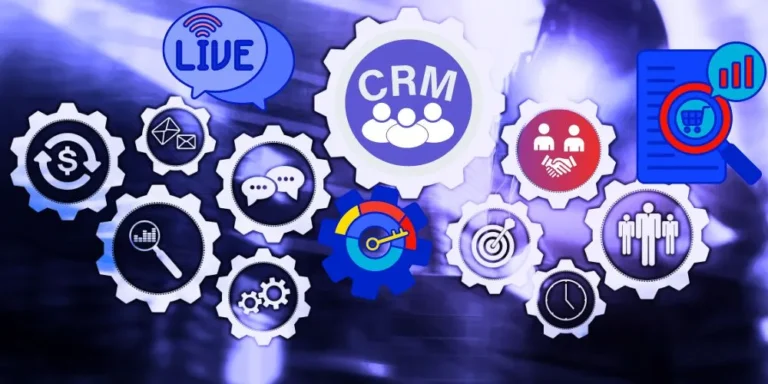Information Technology (IT) has become integral to every organization’s operations and strategic initiatives in today’s technology-driven world. To ensure that IT functions effectively and aligns with business objectives, an IT Governance Framework is essential. This article explores the concept of the IT Governance Framework, its importance, its key components, and how it enables organizations to achieve efficient and effective IT management.
Understanding the IT Governance Framework
An IT Governance Framework is a structured approach that defines the roles, responsibilities, and decision-making processes within an organization’s IT function. It establishes guidelines, policies, and controls to ensure that IT investments, projects, and operations align with business goals and regulatory requirements. The framework enables organizations to make informed IT decisions, manage risks, and deliver value through technology. IT Governance refers to the processes, structures, and policies that guide IT decision-making, risk management, and performance optimization.
Critical Components of IT Governance Framework
To effectively manage IT operations, it is essential to establish a comprehensive IT governance framework. This framework must include critical components such as policies, procedures, and controls that ensure compliance with regulations, mitigate risks, and optimize IT resources.
Clear IT Strategy and Objectives
The foundation of an IT Governance Framework lies in defining a clear IT strategy that aligns with the overall business objectives. It involves understanding business needs, identifying IT capabilities, and setting strategic goals for IT to support the organization’s vision. The IT strategy should be developed with key stakeholders, including business leaders, IT executives, and department heads. It should address how IT will enable and support the achievement of business goals, enhance efficiency, and drive innovation. A well-defined IT strategy is a roadmap for IT initiatives, guiding technology investments, resource allocation, and project prioritization.
Roles and Responsibilities
The IT Governance Framework outlines the roles and responsibilities of IT stakeholders, such as the IT Steering Committee, CIO (Chief Information Officer), IT Managers, and Business Owners. Clear delineation of roles ensures accountability and effective decision-making. The IT Steering Committee, composed of senior executives and business leaders, is crucial in aligning IT with business objectives. It oversees IT governance processes, approves IT projects, and monitors IT performance. The CIO is responsible for the overall management of IT functions, including implementing the IT strategy, ensuring IT security and compliance, and delivering IT services that meet business needs. IT Managers and Business Owners work together to ensure that IT projects and initiatives align with business requirements and deliver value to the organization.
Risk Management
Effective risk management is a crucial component of IT Governance Framework. The framework establishes processes to identify, assess, and mitigate IT-related risks, such as cyber-security threats, data breaches, and system failures. Risk assessments are conducted regularly to identify vulnerabilities and weaknesses in the IT infrastructure and processes. Risk mitigation strategies are developed and implemented based on the risk assessment findings. Organizations may implement firewalls, encryption, multi-factor authentication, and regular security audits to manage cyber-security risks. Data backup and disaster recovery plans are also essential components of risk management.
IT Investment and Budgeting
The IT Governance Framework includes mechanisms for IT investment evaluation and budgeting. It ensures that IT projects are prioritized based on their alignment with business objectives and expected returns on investment. IT investments are assessed for their potential to drive business growth, enhance operational efficiency, and deliver strategic value. Projects that contribute the most to business objectives are given priority in budget allocation. Budgeting for IT initiatives involves evaluating the costs and benefits of projects, estimating resource requirements, and aligning the budget with the organization’s overall financial plan.
Performance Measurement and Reporting
The IT Governance Framework establishes key performance indicators (KPIs) to measure the performance of IT functions. Regular reporting and review enable stakeholders to track progress and identify areas for improvement. Performance metrics may include IT service availability, response times, system uptime, customer satisfaction, and project delivery timelines. These metrics help assess IT performance against predefined targets and benchmarks. Regular reporting to the IT Steering Committee and other stakeholders ensures IT operations and decision-making transparency. It also facilitates data-driven discussions on IT performance and the effectiveness of IT investments.
Importance of IT Governance Framework
A well-defined IT governance framework is crucial for any organization looking to effectively manage its IT operations and ensure compliance with regulations while optimizing resources.
Alignment with Business Objectives
An IT Governance Framework ensures that IT initiatives and investments are aligned with the organization’s overall business objectives. This alignment drives value creation and supports the strategic direction of the organization. By focusing IT efforts on activities that directly contribute to business goals, organizations can maximize the impact of IT on overall business performance.
Efficient Resource Utilization
By prioritizing IT projects and investments, the framework optimizes resource allocation, leading to cost efficiency and better utilization of IT resources. IT resources, such as technology infrastructure, personnel, and budget, are valuable assets that must be allocated strategically to achieve the best possible outcomes. The IT Governance Framework helps avoid duplication of efforts and ensures that resources are directed toward initiatives that provide the most significant value to the organization.
Risk Mitigation
IT Governance Frameworks help organizations identify and address IT-related risks. This proactive approach minimizes the likelihood and impact of IT-related incidents. Proper risk management safeguards the organization’s IT assets, protects sensitive data, and ensures business continuity in the face of potential threats.
Decision-making Transparency
The framework establishes transparent decision-making processes, promoting transparency and accountability in IT management. Stakeholders understand their roles and responsibilities in IT decision-making. Transparency in decision-making fosters trust among stakeholders, improves collaboration between IT and business units, and facilitates IT alignment with overall organizational goals.
Regulatory Compliance
An IT Governance Framework ensures that IT practices adhere to relevant laws, regulations, and industry standards. This compliance reduces the risk of legal and regulatory issues. IT governance practices must comply with data privacy regulations, industry-specific standards, and other legal requirements that govern IT operations.
Conclusion
An effective IT Governance Framework is vital for organizations seeking to harness the full potential of technology and optimize IT management. By aligning IT with business objectives, managing risks, and prioritizing IT investments, the framework enables organizations to make informed decisions and achieve business excellence through technology. The IT Governance Framework fosters transparency, accountability, and regulatory compliance in IT practices, leading to efficient resource utilization and value creation.
Embracing a well-defined IT Governance Framework is a strategic imperative for organizations that leverage technology as a competitive advantage and drive sustainable growth in the dynamic digital landscape. With an IT Governance Framework, organizations can confidently navigate the complexities of the technology landscape, ensure the effective use of IT resources, and achieve their business objectives with greater efficiency and agility.







